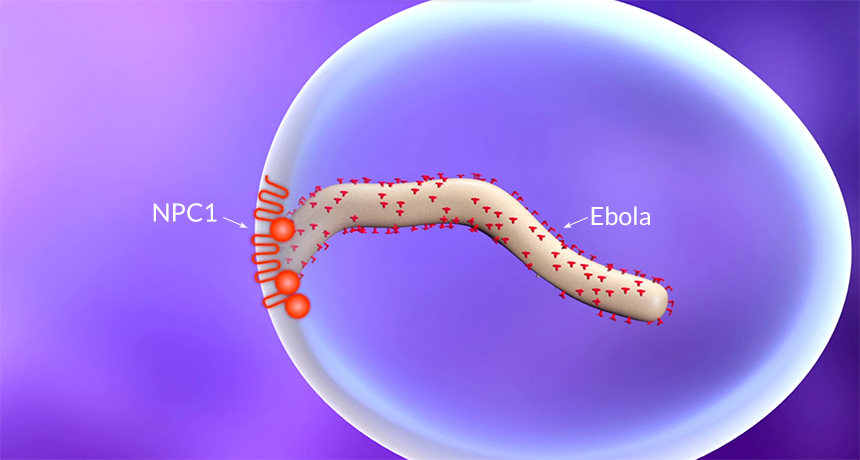Ebola gatekeeper protein identified
Mice lacking cellular transport molecule protected against infection

VIRAL ENTRY The Ebola virus hijacks a protein called NPC1 to invade a host cell.
Albert Einstein College of Medicine
Mice lacking cellular transport molecule protected against infection

VIRAL ENTRY The Ebola virus hijacks a protein called NPC1 to invade a host cell.
Albert Einstein College of Medicine